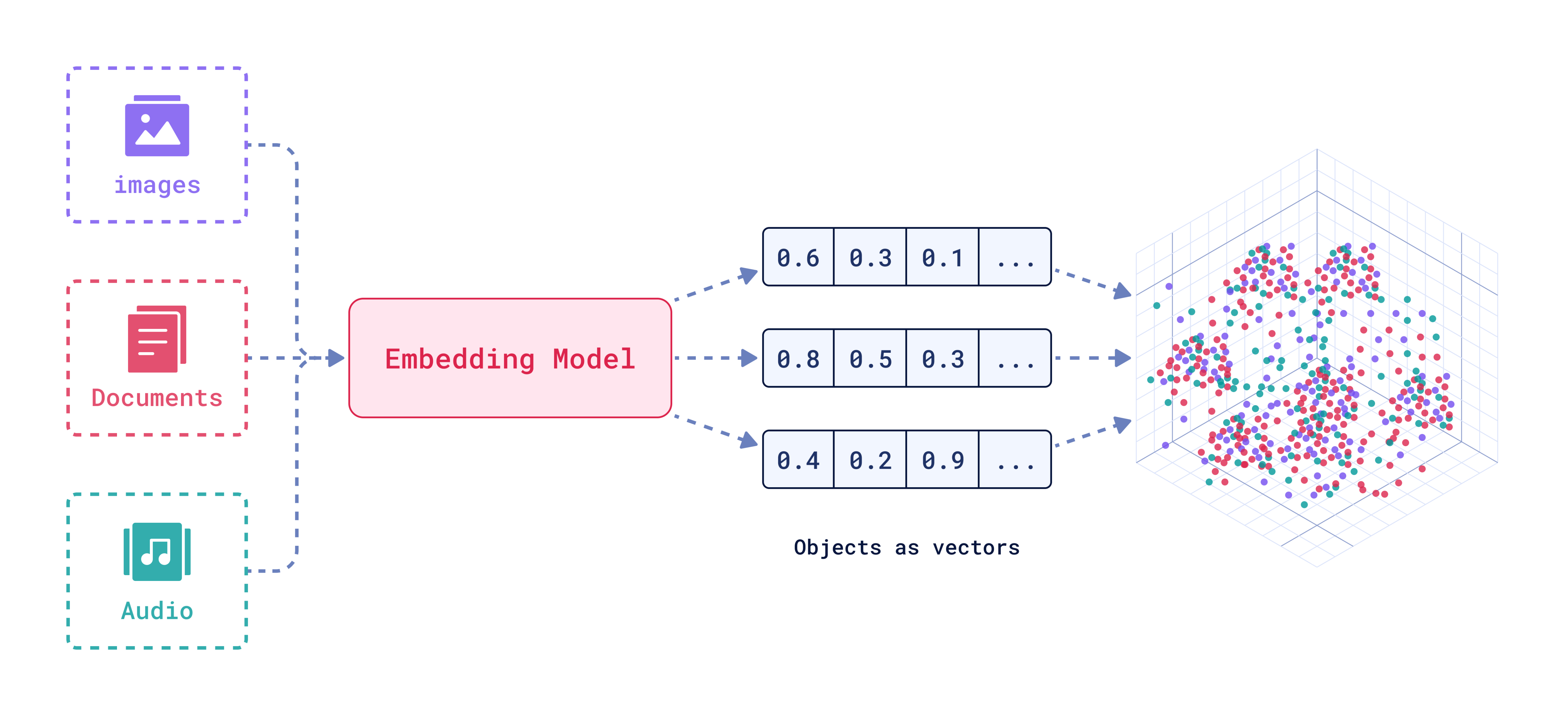Building Efficient Image Similarity Search with VGG16 and FAIS
Apr 18, 2025 am 10:56 AMRapid Image Retrieval: Building a High-Speed Similarity Search System with VGG16 and FAISS
Imagine the frustration of manually searching through countless photos to find a specific image. This article explores a solution: building a lightning-fast image similarity search system using the power of vector embeddings, the VGG16 model, and the efficient indexing capabilities of FAISS.
Key Learning Outcomes:
- Grasp the concept of vector embeddings and their role in representing complex data numerically.
- Understand how VGG16 generates image embeddings suitable for similarity comparisons.
- Learn the functionality of FAISS for rapid indexing and retrieval of similar vectors.
- Develop practical skills to implement an image similarity search system.
- Explore common challenges and their solutions in high-dimensional similarity searches.
(This article is part of the Data Science Blogathon.)
Table of Contents:
- Understanding Vector Embeddings
- Advantages of Using Vector Embeddings
- Introducing VGG16
- Leveraging FAISS for Indexing
- Code Implementation: Building the Image Similarity Search System
- Step 1: Importing Necessary Libraries
- Step 2: Loading Images from a Directory
- Step 3: Loading and Modifying the VGG16 Model
- Step 4: Generating Image Embeddings with VGG16
- Step 5: Creating the FAISS Index
- Step 6: Loading Images and Computing Embeddings
- Step 7: Searching for Similar Images
- Step 8: Example Usage and Search Implementation
- Step 9: Displaying Search Results
- Step 10: Visualizing Results with
cv2_imshow
- Addressing Common Challenges
- Frequently Asked Questions (FAQ)
Understanding Vector Embeddings
Vector embeddings transform complex data (images, text, audio) into numerical vectors. Similar items cluster together in a high-dimensional space, enabling computers to quickly identify related information.

Advantages of Vector Embeddings
Vector embeddings offer several key advantages:
- Efficiency: Rapid distance calculations between vectors enable fast similarity searches.
- Scalability: Handles large datasets efficiently, making them suitable for big data applications.
- Dimensionality Reduction: High-dimensional data (like images) can be represented in lower dimensions without significant information loss, improving storage and efficiency.
- Semantic Understanding: Captures semantic relationships between data points, improving accuracy in tasks like NLP and image recognition.
- Versatility: Applicable to various data types.
- Resource Savings: Pre-trained embeddings and vector databases reduce the need for extensive training.
- Automated Feature Engineering: Automates feature extraction, eliminating manual feature engineering.
- Adaptability: More adaptable to new inputs than rule-based models.
- Computational Efficiency: Compared to graph-based approaches, embeddings are computationally less intensive.
Introducing VGG16
VGG16, a Convolutional Neural Network (CNN), is used here to generate image embeddings. Its 16 layers with learnable weights excel at object detection and classification.
The process involves resizing the input image to 224x224 pixels, passing it through convolutional layers (using 3x3 filters to extract features like edges and textures), applying activation functions (ReLU for non-linearity), and using pooling layers to reduce the image size while retaining key features. Finally, fully connected layers process the information to generate a final output. For our purpose, we use a layer before the final classification layer to obtain the image embedding.

Leveraging FAISS for Indexing
FAISS (Facebook AI Similarity Search) is a library designed for efficient similarity search and clustering of dense vectors. It excels at handling massive datasets and rapidly finding the nearest neighbors to a query vector.
Similarity Search with FAISS: FAISS builds an index in RAM. Given a new vector, it efficiently computes the Euclidean distance (L2) to find the closest vectors in the index.

Code Implementation: Building the Image Similarity Search System
(Note: The following code snippets are illustrative. Refer to the original article for complete, runnable code.)
Step 1: Importing Libraries
import cv2 import numpy as np import faiss import os from keras.applications.vgg16 import VGG16, preprocess_input from keras.preprocessing import image from keras.models import Model from google.colab.patches import cv2_imshow
(Steps 2-10: Refer to the original article for detailed code and explanations of each step.)
Addressing Common Challenges
- Memory Consumption: High-dimensional embeddings for large datasets require significant memory.
- Computational Cost: Generating embeddings and searching can be computationally expensive.
- Image Variability: Variations in image quality and format can affect embedding accuracy.
- Index Management: Creating and updating large FAISS indices can be time-consuming.
Frequently Asked Questions (FAQ)
(Refer to the original article for a comprehensive FAQ section.)
Conclusion
This article demonstrated the construction of a high-speed image similarity search system using vector embeddings, VGG16, and FAISS. This approach combines the power of deep learning for feature extraction with efficient indexing for rapid similarity searches, enabling efficient image retrieval from large datasets. The challenges associated with high-dimensional data were also discussed, highlighting the importance of efficient algorithms and data structures for effective similarity search.


(Note: Images are included as per the original article's specifications.)
The above is the detailed content of Building Efficient Image Similarity Search with VGG16 and FAIS. For more information, please follow other related articles on the PHP Chinese website!

Hot AI Tools

Undress AI Tool
Undress images for free

Undresser.AI Undress
AI-powered app for creating realistic nude photos

AI Clothes Remover
Online AI tool for removing clothes from photos.

Clothoff.io
AI clothes remover

Video Face Swap
Swap faces in any video effortlessly with our completely free AI face swap tool!

Hot Article

Hot Tools

Notepad++7.3.1
Easy-to-use and free code editor

SublimeText3 Chinese version
Chinese version, very easy to use

Zend Studio 13.0.1
Powerful PHP integrated development environment

Dreamweaver CS6
Visual web development tools

SublimeText3 Mac version
God-level code editing software (SublimeText3)

Hot Topics
 Kimi K2: The Most Powerful Open-Source Agentic Model
Jul 12, 2025 am 09:16 AM
Kimi K2: The Most Powerful Open-Source Agentic Model
Jul 12, 2025 am 09:16 AM
Remember the flood of open-source Chinese models that disrupted the GenAI industry earlier this year? While DeepSeek took most of the headlines, Kimi K1.5 was one of the prominent names in the list. And the model was quite cool.
 AGI And AI Superintelligence Are Going To Sharply Hit The Human Ceiling Assumption Barrier
Jul 04, 2025 am 11:10 AM
AGI And AI Superintelligence Are Going To Sharply Hit The Human Ceiling Assumption Barrier
Jul 04, 2025 am 11:10 AM
Let’s talk about it. This analysis of an innovative AI breakthrough is part of my ongoing Forbes column coverage on the latest in AI, including identifying and explaining various impactful AI complexities (see the link here). Heading Toward AGI And
 Grok 4 vs Claude 4: Which is Better?
Jul 12, 2025 am 09:37 AM
Grok 4 vs Claude 4: Which is Better?
Jul 12, 2025 am 09:37 AM
By mid-2025, the AI “arms race” is heating up, and xAI and Anthropic have both released their flagship models, Grok 4 and Claude 4. These two models are at opposite ends of the design philosophy and deployment platform, yet they
 In-depth discussion on how artificial intelligence can help and harm all walks of life
Jul 04, 2025 am 11:11 AM
In-depth discussion on how artificial intelligence can help and harm all walks of life
Jul 04, 2025 am 11:11 AM
We will discuss: companies begin delegating job functions for AI, and how AI reshapes industries and jobs, and how businesses and workers work.
 10 Amazing Humanoid Robots Already Walking Among Us Today
Jul 16, 2025 am 11:12 AM
10 Amazing Humanoid Robots Already Walking Among Us Today
Jul 16, 2025 am 11:12 AM
But we probably won’t have to wait even 10 years to see one. In fact, what could be considered the first wave of truly useful, human-like machines is already here. Recent years have seen a number of prototypes and production models stepping out of t
 Context Engineering is the 'New' Prompt Engineering
Jul 12, 2025 am 09:33 AM
Context Engineering is the 'New' Prompt Engineering
Jul 12, 2025 am 09:33 AM
Until the previous year, prompt engineering was regarded a crucial skill for interacting with large language models (LLMs). Recently, however, LLMs have significantly advanced in their reasoning and comprehension abilities. Naturally, our expectation
 6 Tasks Manus AI Can Do in Minutes
Jul 06, 2025 am 09:29 AM
6 Tasks Manus AI Can Do in Minutes
Jul 06, 2025 am 09:29 AM
I am sure you must know about the general AI agent, Manus. It was launched a few months ago, and over the months, they have added several new features to their system. Now, you can generate videos, create websites, and do much mo
 Build a LangChain Fitness Coach: Your AI Personal Trainer
Jul 05, 2025 am 09:06 AM
Build a LangChain Fitness Coach: Your AI Personal Trainer
Jul 05, 2025 am 09:06 AM
Many individuals hit the gym with passion and believe they are on the right path to achieving their fitness goals. But the results aren’t there due to poor diet planning and a lack of direction. Hiring a personal trainer al






